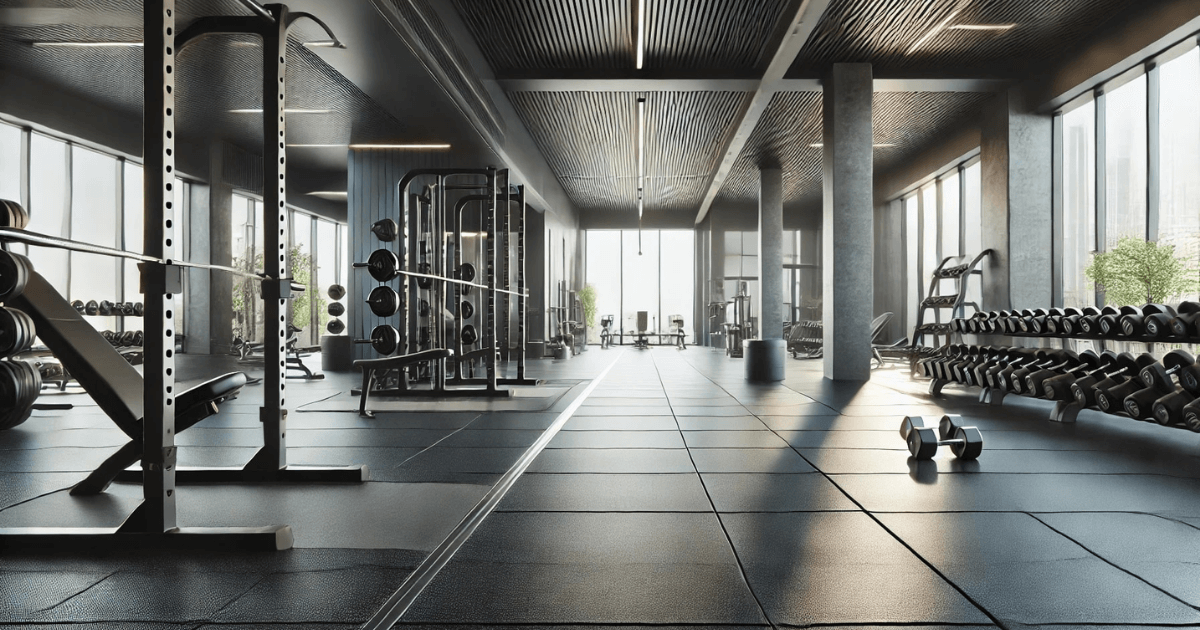Frequently Asked Questions About Gym Flooring

Choosing the right flooring for your gym is crucial for safety, performance, and aesthetics. This FAQ guide covers common questions about rubber gym flooring, EVA foam mats, and artificial turf to help you make an informed decision.
1. What is rubber gym flooring, and what are its benefits?
Rubber gym flooring is made from recycled rubber and is known for its durability and shock-absorption properties. Benefits include:
- Durability: Rubber flooring can withstand heavy weights and frequent use.
- Shock Absorption: It provides excellent cushioning, which helps protect joints during workouts.
- Slip Resistance: The textured surface helps prevent slips and falls, making it safe for various exercises.
- Easy Maintenance: Rubber flooring is resistant to stains and odors, requiring minimal cleaning.
2. What are EVA foam mats, and where are they commonly used?
EVA foam mats are made from ethylene-vinyl acetate and are popular for their lightweight and soft nature. Common uses include:
- Yoga and Pilates: The cushioning effect is ideal for floor exercises and stretches.
- Children’s Play Areas: The mats provide a safe, cushioned surface for kids to play on.
- Martial Arts: EVA mats are often used in dojos and training facilities for their impact-absorbing qualities.
3. What is artificial turf, and how can it be used in a gym?
Artificial turf is a synthetic surface designed to mimic natural grass and is often used in sports facilities. Benefits of using artificial turf in a gym include:
- Versatility: Ideal for various training activities like agility drills, sled pulls, and conditioning workouts.
- Durability: Artificial turf can withstand heavy foot traffic and harsh weather conditions.
- Aesthetic Appeal: It provides a natural grass look, enhancing the overall appearance of the gym.
4. How do I choose the right flooring for my gym?
Choosing the right gym flooring depends on several factors:
- Type of Workouts: Consider the primary activities in your gym. For weightlifting, rubber flooring is ideal, while EVA foam mats are better for yoga.
- Durability Requirements: Evaluate how much foot traffic your gym will experience. High-traffic areas need more durable materials.
- Budget: Determine your budget as flooring options can vary significantly in price.
- Maintenance: Choose a flooring option that aligns with your cleaning capabilities and time.
5. Is it easy to install gym flooring?
The ease of installation varies by flooring type:
- Rubber Gym Flooring: Often comes in rolls or tiles, making installation straightforward, but some may require adhesive.
- EVA Foam Mats: Typically designed for easy DIY installation as they often interlock.
- Artificial Turf: Installation can be more complex and may require professional help for proper alignment and anchoring.
6. How do I maintain gym flooring?
Maintenance varies depending on the flooring type:
- Rubber Flooring: Regular sweeping and occasional mopping with a gentle cleaner.
- EVA Foam Mats: Easy to clean with a damp cloth or mild soap.
- Artificial Turf: Rake to remove debris and occasionally hose down to clean.
Share


